Welcome to the cozy world of British longhair cats, lovable feline friends with plush, flowy coats and a regal aura that can charm any cat lover. These furry companions are not just a delight to behold but are indeed a bundle of joy to have around.
This breed is known with different names. Whether they’re called British Longhair Variant, Brittannica in Europe, or even Lowlander in the United States, they are all one and the same breed.
These long-haired variants of the British shorthair are known for their affectionate personalities. They bond deeply with their families and love nothing more than being involved in every aspect of home life.
Whether you’re reading, cooking, or binge-watching your favorite series, your British long-hair pal will likely be right by your side, offering purrs of companionship.
If you’re ready to learn all there is to know about taking care of a British Longhair, then look no further!
In this article, we’ll explore the care requirements for providing your cat with the best possible life.
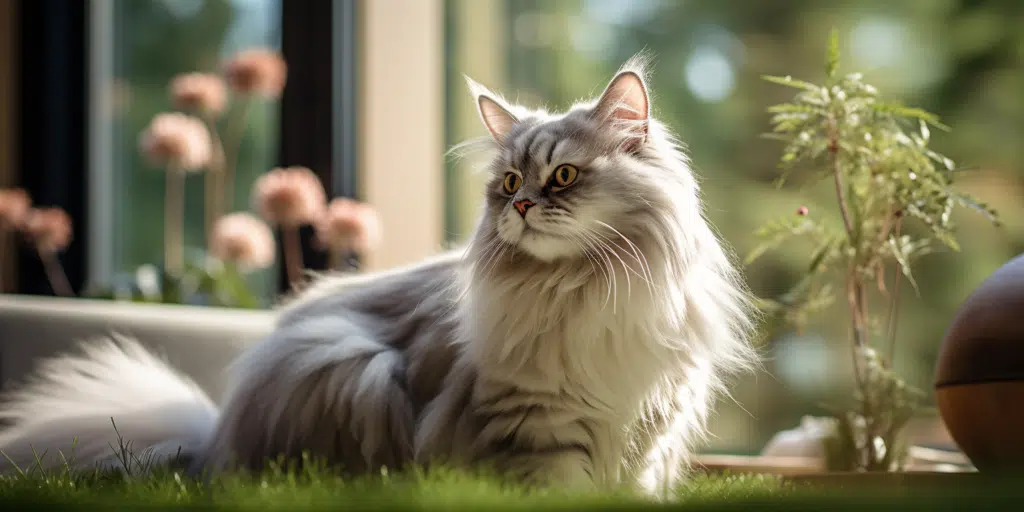
Breed Overview
The British Longhair is a charming and endearing breed of cat, renowned for its luxurious coat and outgoing personality. These cats have bright eyes, round faces, and an overall cuddly body type.
Breeders mixed British Shorthairs with long-haired Turkish Angora (A.K.A classic Persian) to develop a long-hair variant. This crossbreeding in the mid-1900s wasn’t just for the looks; it was to create a sturdier kitty with those dazzling round faces we’ve come to adore.
Fast forward to today, and you’ll find that what started as an accidental by-product of breeding has now turned into a full-fledged endeavor to perfect the British Longhair breed. These used to be the unexpected guests in litters, but now they are the stars of their own show.
While still on their path to official recognition, they’re catching the eye of fancy feline organizations across the UK. It’s a breed in the making, finding its footing among cat lovers and breeders alike.
They carry the charm of their short-haired relatives but bring their own touch of magic with their luxurious locks. For anyone looking for that blend of stateliness and softness, the British Longhair ticks all the right boxes!
Identifying British Longhair Cat
Spotting a British longhair is easy once you know what you’re looking for. Their majestic fur comes in many colors, from deep blues to classic silvers. You’ll find that this breed has bright, expressive eyes that often shimmer with intelligence and curiosity.
One of the breed’s signature traits is their round face, which adds to their charm and distinguishes them from other cats. Under their thick manes are sturdy bodies with a broad chest, creating an impressive and cuddly figure.
These purring companions boast long, plush tails that they carry with pride. It’s one of their standout features, so keep an eye out for that luxurious plume. On top of their beauty, British longhairs have a calm and friendly personality. They are sociable pets who adore being part of a warm and loving home.
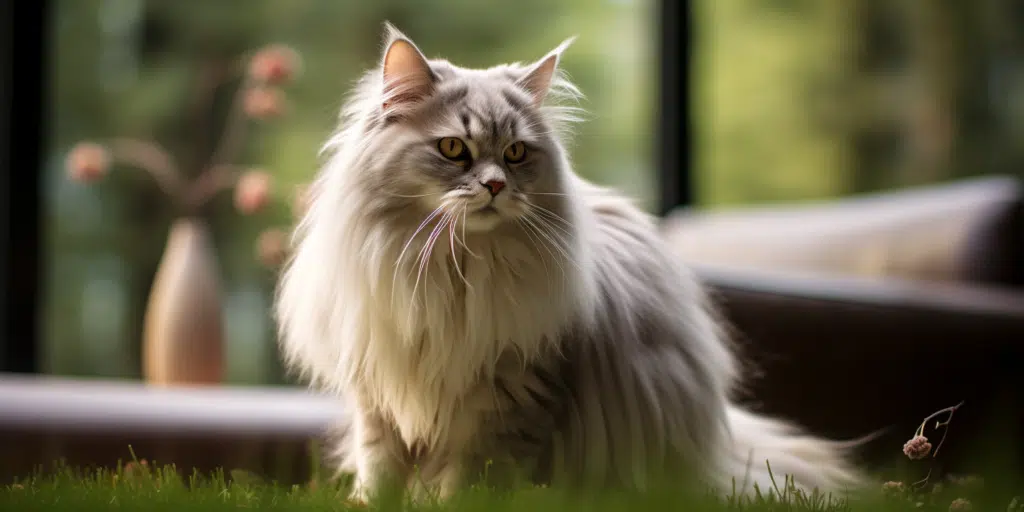
Personality Traits
The British longhair cat is known for its laid-back and friendly personality. These cats love to snuggle and provide a sense of calm for their owners. They fit well in many homes due to their adaptable nature.
While they enjoy lounging, British Longhairs also have an independent side. They won’t mind if you’re out, but they’re always ready for cuddles when you return. They love to play and show off their smart and curious traits.
Some cats might not like being picked up or carried around. This is due to their independent personalities; they often come to you when they want a cuddle but never try to forcefully snuggle with your British!
British Longhairs are tolerant of children and other animals, such as dogs, but generally do not like being carried around. They enjoy their own company while being content when you come back home from work or run errands after spending time away from them.
Be careful to provide plenty of positive reinforcement for desired behaviors when you introduce your new cat to your household so that they may learn how to traverse different relationships within the home environment more readily. Socializing your cat as soon as possible will help with this.
Activity Level
British Longhairs are not very active, but they do have an occasional “mad” moment where they act like kittens and play with toy mice. They appreciate having plenty of space for exploration and can often be found lying in the sun or underneath furniture, surveying their indoor kingdom.
These intelligent cats are quiet yet unobtrusive, ruling over their domain with a calm demeanor that shows before leaping into any action—usually avoiding high-flying acrobatics altogether!
British Longhair Cat Loyalty
The British longhair is known for its loyalty and loving nature. These cats have an independent streak, but they also love to be around people and other animals.
They enjoy spending time with their owners, often following them from room to room or playing fetch with a toy. Even when left alone, these cats remain content and self-sufficient.
With proper care and attention, this unique breed will provide companionship for years!
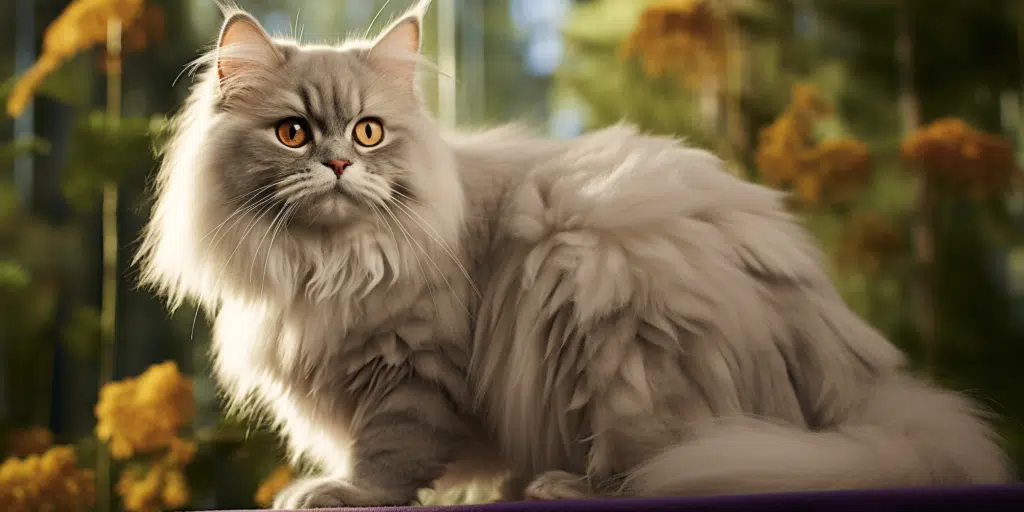
Love Of Water
The British Longhair’s coat is long and luxurious, differentiating them from their short-haired cousin. Their fur helps protect them from splashes of water when playing in the tub or garden pond.
The long hair also gives these cats an extra layer of insulation against chilly temperatures when they venture outside for a dip in cooler water sources such as streams or lakes on warm summer days.
They are known for being curious and independent creatures, so if you’re looking for a companion who loves nothing better than taking a swim each day, then this could be the perfect choice!
Trainability
British longhair cats are intelligent and often easy to train. With the right motivation, they can be taught simple tasks like using a litter box or scratching a post in no time. It’s not uncommon for them to pick up new tricks as well.
As food-loving cats, treats make an excellent way to reward good behavior during training sessions. In addition to trainability, British Longhairs are known for their affectionate personalities and strong bonds with their owners.
They enjoy spending quality time with their family members and thrive on lots of love and attention from people. As long as these cats receive plenty of companionship – both human and feline – they’ll be happy members of the household!
With this combination of intelligence, loyalty, and sociability, it’s no wonder that British Longhairs have become one of the most trainable cat breeds today.
Adult Size
The British Longhair is a medium-to-large cat that typically weighs between 9 and 18 pounds. However, its size can vary greatly depending on the individual animal.
On average, this breed measures 16 inches in length from nose to tail and stands around 8 to 14 inches tall.
Did you know its growth rate changes throughout the stages of life?
- Kitten Phase (0-6 months): A time of rapid growth, British Longhair kittens are playful and curious. They’ll need lots of nutrition as they can double or even triple their size during this period.
- Adolescence (6-12 months): Growth rate slows down. They become more coordinated and continue to develop their lovely long coats.
- Adult Cat (1-2 years): They reach full size around this stage. Their growth steadies, but they’ll still fill out, gaining muscle and a bit more weight.
- Mature Adult (3-7 years): Fully grown, British Longhairs maintain their physique. A balanced diet and regular exercise are key to keeping them fit.
- Senior Cat (8 years and older): The gentle aging process may start. They might become less active, so it’s important to adjust their diet to match their energy levels.
Watching a British longhair cat grow is a delightful journey. With proper care and love, these cats will be a magnificent addition to any family!
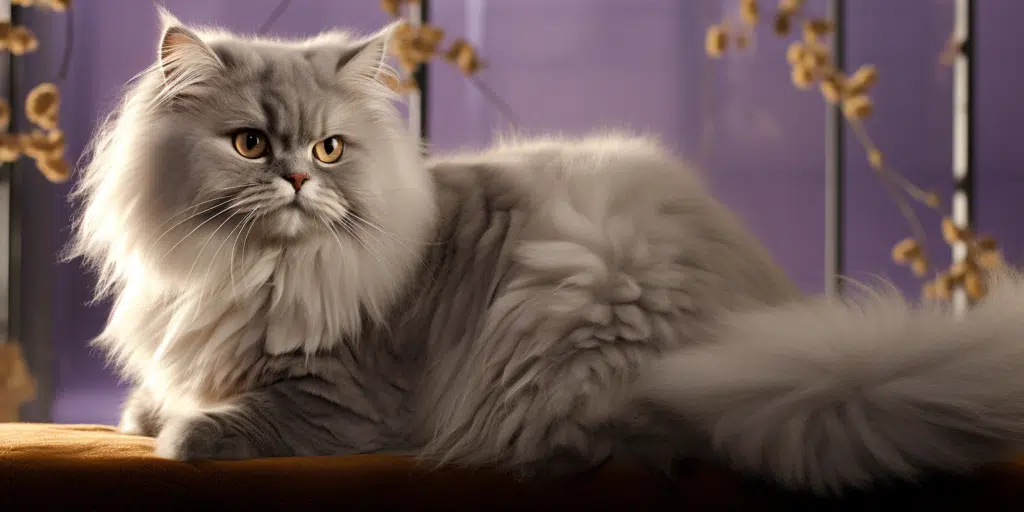
Life Expectancy
British longhair cats are known for their luxurious coats and calm personalities, making them wonderful companions. With proper care and nutrition, these cats can live between 12 to 15 years! But there are many reports that this breed reached up to 20 years.
To ensure that your British Longhair cat reaches its maximum lifespan, it is important to provide them with a balanced diet of high-quality food that contains key nutrients like taurine and omega fatty acids.
Additionally, regular vet checkups will help monitor their health and detect any potential issues early on. You should also make sure your British Longhair cat has plenty of opportunities for fun and exercise.
British Longhair Care
When caring for a British Longhair, one of the most important things to keep in mind is keeping them active and engaging in regular exercise. This is especially true if you notice your cat becoming overly sedentary as they can quickly become obese and develop related health issues.
An effective way to make sure they stay active is by playing treat-based games with them or using interactive feeding devices. Additionally, it’s important to make sure their nails are trimmed regularly so they don’t cause any damage while scratching furniture or humans.
It’s best to speak with your vet about how best to do this safely before attempting it on your own. In addition to nail care, their ears should be examined every couple of weeks for signs of dirt buildup or infection.
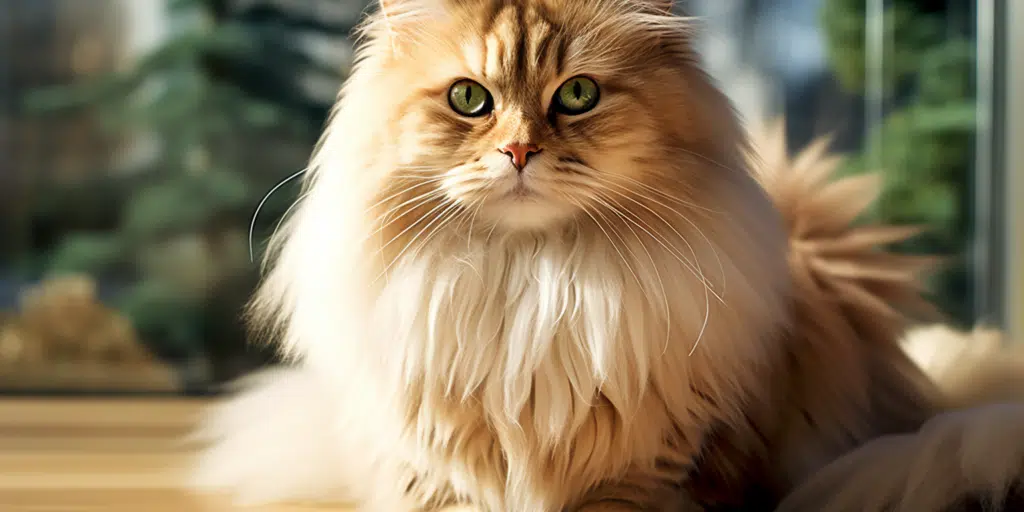
Brushing teeth regularly also plays an essential role in keeping the British Longhair healthy as regular dental hygiene will help prevent cavities and gum disease from forming over time. You can begin this process by speaking with your vet about the type of toothbrush that would work best for your cat and what sort of toothpaste might be most suitable for their needs too!
Scheduling yearly wellness visits with your vet is a must when caring for a British Longhair as early detection can help catch any potential illnesses before they become more serious health concerns down the line.
During these checkups, have them examine everything from heart rate and breathing patterns up to nutrition levels! This will ensure that they remain happy and healthy throughout their life span which could potentially exceed 15 years!
Diet
British longhair cats require a specific diet to maintain their health. An adult British Longhair should be fed twice daily with a controlled amount. Feeding should be on a regular schedule with high-quality wet food containing an ample amount of protein and other essential nutrients.
Since these cats are relatively calm, they do not need as much food as one would expect for their size. Free feeding is not recommended, as it can lead to overeating and obesity.
Kittens need more frequent meals than adults, so they should be fed three or four times a day until they reach adulthood, around 12 months old. A kitten’s diet should include all the necessary nutrients, such as proteins from meat sources, omega-3 fatty acids found in fish oil, and taurine, an amino acid important for eye development and muscle function.
Carbohydrates like vegetables and grain-free kibble are also beneficial for kittens, but the main focus should be on the proteins, which provide energy for growth.
British longhairs have thick coats that require appropriate nutrition to stay healthy, especially during shedding season when additional fats may be needed to keep their fur looking its best.
Omega-6 fatty acids found in some foods can help keep skin healthy. These foods also provide essential vitamins like A and E, which promote a glossy coat.
Its best to visit a vet to prepare a meal plan specifically tailored for your cat
Always check with your veterinarian before making any drastic dietary changes to ensure your cat is getting all the nutrients it needs at every stage of life!
British longhair cats require plenty of clean drinking water to stay healthy and hydrated. It is important to provide fresh water daily and place the bowl at least three feet away from any food.
This is because their noses are sensitive, and an overwhelming smell of food could cause them to drink less. Cats should always have ample access to water because they need it to help keep their coats shiny, aid digestion, and help flush out toxins from their bodies.
Another way of providing your feline with the right amount of water is by feeding them wet or canned food, as this will add moisture to their diet. Wet foods can be a great source of hydration that helps prevent urinary tract infections and other health problems caused by dehydration.

Exercise Requirement
It is important to keep British Longhairs active and engaged in playtime activities. Regular playtime helps to provide mental stimulation as well as physical exercise, which will help keep them healthy in body and mind.
Playtime can also be a great way to bond with your cat. Interactive toys such as feather wands or laser pointers allow you to engage directly with your cat while playing together. This strengthens the trust between pet and owner while providing an enjoyable activity for both of you!
Keeping this breed active not only helps ensure they remain healthy physically, but it also keeps them mentally stimulated, which is essential for overall wellbeing.
Spending quality time interacting and playing together creates strong bonds between pets and owners while giving both species something fun to look forward to every day!
Shedding Levels
British longhair cats do shed, but less than other longhair cats. This breed requires regular brushing to keep their fur looking its best. The shedding levels can vary throughout the cat’s life.
- Kittenhood: During the early months, these furry friends don’t shed much. Their soft baby fur clings tight as they grow.
- Adolescence: As they hit the teen phase, shedding increases slightly. You might notice more hair around as their coat changes.
- Adulthood: This is when you’ll see a stable shedding pattern. Regular grooming is key to managing the loose fur.
- Senior Years: Aging cats might shed less. Their coat might thin out, so gentle care is essential.
Remember, these fluffy beauties need regular brushing to keep their coats shiny and minimize shedding. This routine bonding not only helps manage their shedding but also keeps their luxurious fur in prime condition!

Health Issues
British Longhair Cats are generally quite healthy and robust, but like any other breed of cat, they are still susceptible to certain diseases.
The most common diseases for this breed include upper respiratory infections, fleas, and ticks, obesity due to lack of exercise or excessive eating, eye problems such as conjunctivitis or corneal ulcers, dental disease caused by poor oral hygiene and tartar buildup on the teeth as well as heartworm.
Poor diet and living conditions can significantly affect the health of a British Longhair Cat. A poor diet consisting of foods lacking in essential nutrients, proteins, and vitamins can cause malnutrition leading to skin, coat, and digestive problems.
Unclean living conditions such as overcrowding or exposure to toxins, chemicals, or parasites can lead to infections or other diseases. To prevent disease and keep your cat healthy it is important to provide a balanced diet with appropriate amounts of protein, carbohydrates, and fats.
Additionally, providing a clean environment free from toxins and parasites will help ensure your cat’s health. Regular visits to the vet for vaccinations are also recommended as well as regular grooming sessions to check for any signs of illness or infection.
Buying Tips
- Research the breed: Before purchasing a British Longhair Cat, it is important to do some research on their characteristics and traits so that you can make an informed decision about whether or not this type of cat is right for you.
- Look for reputable breeders or shelters: When looking to purchase a British Longhair Cat, be sure to look for reputable breeders or shelters that are knowledgeable about the breed and have experience in providing good care and health checks for kittens before they go home with their new owners.
- Talk to your vet: If possible, speak with your veterinarian before bringing home a kitten as they may be able to provide additional advice specific to this particular breed of cat.
- Ask questions: Be sure to ask plenty of questions when meeting potential kittens such as where the breeder obtained them from, what vaccinations have been given, if there are any known health issues within the litter, etc.. Doing so will help ensure that you make an informed decision when selecting which kitten is best suited for your family or lifestyle circumstances.
- Consider rehoming an older cat: Purchasing an adult British Longhair Cat can also be a great option as these cats typically require less supervision than younger ones and often come pre-socialized which can save time in terms of training them in the future!
You Will Need: 250+ Amazing British Longhair Cat Names & How To Select One!

Conclusion
The British Longhair Cat is an ideal choice for anyone looking to add a unique and loving companion to their family. With its striking coat, quiet nature, and fun-loving personality, this breed offers so much in the way of companionship and entertainment.
Their intelligence makes them easy to train, while their laid-back attitude ensures they get along well with humans and other pets alike. On top of all that, they are relatively low maintenance when it comes to grooming needs.
All these qualities make the British Longhair Cat a great choice for any home!